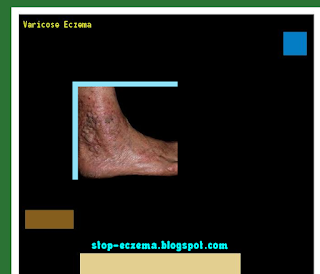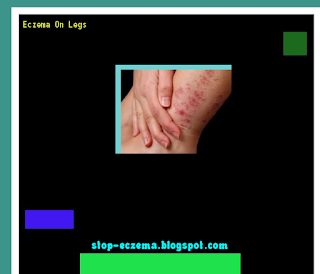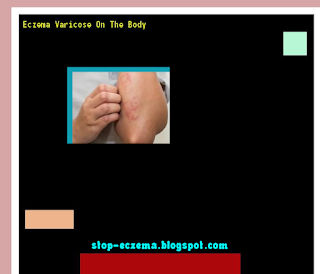Pathological processes in the area of the lower extremities are quite common among the elderly. As practice shows, mostly women are susceptible to the disease, but cases of the disease in men are also not uncommon. Usually the consequence of the progression of the disease is varicose eczema, or so-called stagnant dermatitis, which occurs as a result of insufficient blood circulation. Blood stagnation, entailing epidermal lesions, as a rule, characteristic of patients who underwent surgery to eliminate thrombosis, as well as persons suffering from varicose veins.
For varicose eczema of the lower extremities are characterized by seasonal exacerbations and recessions, so in the case of timely and professional treatment to get rid of the symptoms and achieve significant remission is quite possible.
The article presents information about the causes of the pathology, its symptoms, and you can also find out which treatment is the most effective in varicose eczema.
In addition, the material contains information about preventive measures, which can prevent the development of pathology.
Following the advice of dermatologists, you can not only get rid of the manifestations of the disease forever, but also to prevent its occurrence. After all, as you know, to prevent the development of the disease is much easier than to cure it.
Additional factors contributing to the manifestation of varicose veins include:
Stages of disease development:
Eczema in varicose veins is characterized by the development of the following symptoms:
There is no specific way to diagnose varicose veins at the moment. As a rule, the establishment of the cause of skin lesions is carried out according to the patient, as well as after examination of the epidermis and study of the nature of the damage. Additionally, the doctor may prescribe tests, in particular for allergic reactions to external stimuli.
During the diagnosis, the main task of the dermatologist is to establish the causes that provoked varicose veins.
To achieve this goal, the following research methods can be assigned:
Antihistamines ("Karotegin", "Help") help to reduce the inflammatory effect, relieves itching and burning. Also for soothing of the nervous system are appointed by sedatives, the favorable impact of drugs on the basis of Valerian and hawthorn.
In case of complications, it is necessary to use antibacterial drugs, in particular "Amoxicillin", "Suprax", "Azitrox".
Healing of affected areas contribute to:
In the case of the first signs of varicose veins should immediately consult a doctor, self-treatment can lead to undesirable consequences and deterioration of health in General.
For varicose eczema of the lower extremities are characterized by seasonal exacerbations and recessions, so in the case of timely and professional treatment to get rid of the symptoms and achieve significant remission is quite possible.
The article presents information about the causes of the pathology, its symptoms, and you can also find out which treatment is the most effective in varicose eczema.
Pay attention! At the heart of treatment therapy for varicose veins is the use of traditional methods of treatment, the use of traditional medicine is allowed as an auxiliary method of healing from the disease.In addition, the material contains information about preventive measures, which can prevent the development of pathology.
Following the advice of dermatologists, you can not only get rid of the manifestations of the disease forever, but also to prevent its occurrence. After all, as you know, to prevent the development of the disease is much easier than to cure it.
Causes of the disease
Varicose eczema is a dermatological skin disease that develops as a result of circulatory disorders in the veins located on the lower extremities. In addition, a factor contributing to the progression of the disease is the imperfect operation of the valves, their inability to perform their functions accordingly. The presence of the above circumstances entails insufficiency of venous outflow, and as a consequence, the formation of stagnation in the venous vessels.Additional factors contributing to the manifestation of varicose veins include:
- the presence of excess weight in the patient, resulting in a significantly increased load on the legs, contributing to an increase in pressure in the veins and the formation of blood stagnation;
- patients suffering from deep vein thrombosis are more susceptible to the disease;
- external damage to the legs, their injury;
- hereditary factor;
- disorders of the cardiovascular system;
- advanced forms of dermatological diseases, manifested earlier, and entailed the development of complications, for example, in the form of bacterial infection;
- in women, venous eczema may occur during pregnancy, due to excessive weight, or immediately after birth. To avoid such consequences, you can follow the recommendations of nutritionists;
- non-compliance with the principles of proper nutrition, violation of the order, which led to failures in the work of the whole body;
- daily use of uncomfortable shoes, which is the cause of additional stress on the lower limbs. Thus, the constant wearing of high-heeled shoes contributes not only to the deformation of the foot, but also to the development of varicose veins.
More information! According to dermatologists, stagnant dermatitis is more common in patients whose parents (one of the parents) have suffered from stagnant dermatitis. In this case, the disease itself can not be inherited, but only a predisposition to its manifestation, so in the case of following the recommendations of dermatologists, it is possible to protect yourself from the development of pathology.How does varicose eczema develop?
The development of pathology is carried out in several stages:- dysfunction of the valves and the poor condition of the venous vessels entails a fundamental change of the outflow of blood;
- the next step is a significant increase in veins, their swelling;
- increase of blood pressure in veins;
- reducing the thickness of the epidermis of the lower extremities;
- formation of cracks and wounds in the affected areas.
Important! Neglect of the disease can lead to the addition of bacterial infection, the formation of ulcers. Most often, venous eczema affects the area of the ankle joint.Stages of varicose eczema
In varicose eczema of the lower extremities, treatment is prescribed depending on the stage of development of the disease. It should be noted that each stage is characterized by different symptoms and signs.Stages of disease development:
- initial stage. At this stage, the first signs of blood flow disorders are observed: the skin begins to peel and itch, the color of the epidermis changes;
- the second stage of the disease is characterized by soft tissue edema, along with peeling of the skin, its erosion begins. The epidermis becomes reddish, as a result of constant combing on the skin there are wounds and ulcers;
- the third stage of the disease is characterized by the appearance of bubbles on the skin, which are subsequently opened and so-called wetness is formed in their place. The danger of this stage is the presence of the probability of complications (bacterial infection);
- the fourth stage is accompanied by inhibition of inflammatory processes. Wounds and ulcers dry up, covered with crust. As a rule, scars and scars remain in the places of localization of the disease.
Symptoms of varicose eczema
The localization of the disease:- Shin area;
- ankle;
- foot;
Pay attention! When varicose veins can affect both legs at the same time, and each limb separately.Eczema in varicose veins is characterized by the development of the following symptoms:
- changing the color of the skin on the legs, which is justified by the development of inflammatory processes;
- the temperature increase of the epidermis;
- constant burning in the affected areas;
- the appearance of puffiness;
- formation of bubbles (vesicles) filled with transparent liquid;
- wetness arising in the places of opening of vesicles;
- scars.
Diagnosis of disease
In the case of venous eczema, treatment is prescribed directly by a dermatologist and only after diagnostic measures.There is no specific way to diagnose varicose veins at the moment. As a rule, the establishment of the cause of skin lesions is carried out according to the patient, as well as after examination of the epidermis and study of the nature of the damage. Additionally, the doctor may prescribe tests, in particular for allergic reactions to external stimuli.
During the diagnosis, the main task of the dermatologist is to establish the causes that provoked varicose veins.
To achieve this goal, the following research methods can be assigned:
- Doppler ultrasound imaging;
- the use of radiopaque venography.
Treatment of varicose eczema
With varicose eczema of the lower extremities (photo), treatment is prescribed both medical and surgical. As a rule, surgery is required in advanced cases, when medications and external means have not had the desired effect.Traditional methods of control of varicose eczema
In the initial stages of development of pathology is recommended to use external means of local action. These include creams, ointments, medicated baths, lotions (cream "Skin-KAP", hormonal agent "Triderm", corticosteroids, ointment "Sinaflan", antiseptic external funds).Antihistamines ("Karotegin", "Help") help to reduce the inflammatory effect, relieves itching and burning. Also for soothing of the nervous system are appointed by sedatives, the favorable impact of drugs on the basis of Valerian and hawthorn.
In case of complications, it is necessary to use antibacterial drugs, in particular "Amoxicillin", "Suprax", "Azitrox".
Important! It is recommended to treat varicose veins with antibiotics only after visiting a dermatologist and establishing the cause of the disease.Is it possible for varicose eczema treatment folk remedies?
Important! Folk recipes can be used as an additional way to combat the disease. Before using alternative medicine should consult with a dermatologist.Healing of affected areas contribute to:
- almond and coconut oil;
- healing compositions on the basis of medicinal herbs (burdock, Ivan-tea, chamomile);
- decoctions of chamomile, calendula and oak bark promote healing of ulcers and reduce inflammation.
Preventive measures, dermatologist recommendations
Effective preventive measures to prevent the manifestation of the disease are:- active lifestyle;
- athletics;
- adherence to the principles of proper nutrition;
- the use of comfortable shoes.
Pay attention! Even with the appearance of the first symptoms of the disease, movement should not be limited, it promotes microcirculation and wound healing.In the case of the first signs of varicose veins should immediately consult a doctor, self-treatment can lead to undesirable consequences and deterioration of health in General.











0 Comments:
Post a Comment